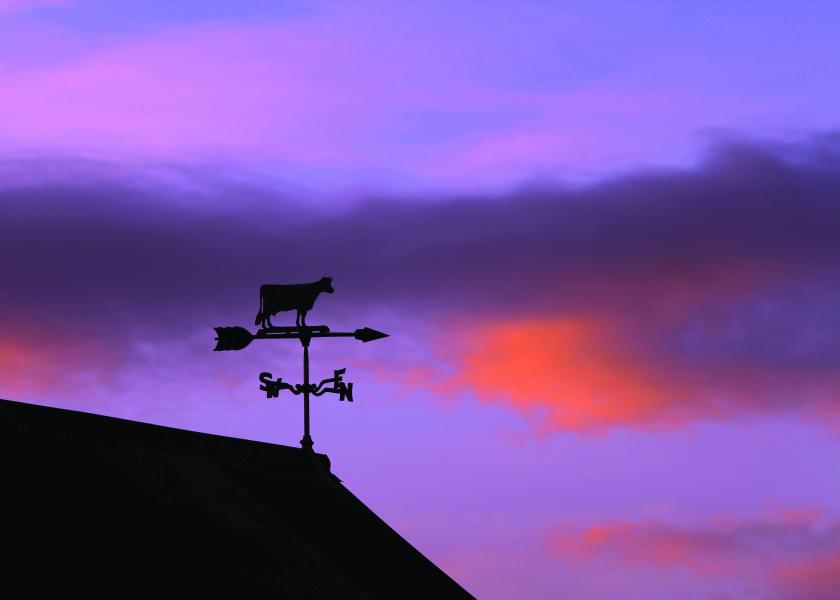Part 2: The Cry for the Family Farm

This is the second in a two-part series. Click here to read part one.
Can we define what constitutes a family farm? A multigenerational row crop family in Illinois who farms 15,000 acres would classify themselves as a family farm. A 10,000 cow dairy in Wisconsin would too. So would a 300 cow dairy or an organic vegetable gardener or a feedlot operator.
Yet the prevalent social themes and the current political system builds upon the idealistic notion of family farming that parallels Charlotte’s Web. The fight for the family farm is the emotionally charged crusade. In DC the fight for the family farm is one of the few initiatives that dares to cross the aisle. Democrats and Republicans love to save the family farm—even if no one can define what exactly that means. We are not, even within the farming community, ready to call out the fact that the term ‘family farming’ is a generic misnomer because of its immense emotional power in lobbying.
In that void of understanding however, another troubling pattern emerges. In our campaign to save the family farm, the ‘factory farm’ became the nemesis. It is an evolutionary truth in human narratives that there must be the dichotomy of good versus evil for allegiances to be forged. The family farm needed an antagonistic rival, who stood in stark contrast to the wholesome values associated with the deeply romanticized, historical concept of the family farm. Thus, the ‘factory farm’ was born of this necessity. The living, breathing, operative embodiment of crony capitalism and serfdom rolled into one magic bullet with the power to proliferate propaganda about environmental destruction, animal welfare concerns and human rights violations.
The unintended consequence however of years of this pervasive pattern of behavior is that we have created right and wrong kinds of farming, and we have mobilized the entire non-ag population against conventional agriculture. Not only that, but the very fiber that binds the ag community together is coming apart at the intersection of conventional and old-world practices.
So powerful is this narrative that in a debate last week a social justice attorney espoused that poultry integrators prey upon farmers with predatory practices designed to reduce them to guaranteed bankruptcy. Most growers, he said, live below the poverty line. When in fact a USDA analysis showed that the average income of poultry growers in 2014 was $68,000 annually, $18,000 more than US median income.
There was a point in the recent past, where a family could sign an integrated grower contract—with much lower financial obligations—and earn a modest living with no off-farm income. But there was also a recent history where one teaching income could support the traditional nuclear family. I would argue that a family living on a single teaching income in the state of Arkansas is much more at risk of living below the poverty line both in terms of cash-flow and assets than a poultry farmer.
But the narrative of the endangered family farm and the at-risk farmer and the predatory factory farm sells. Against facts and reason and hard data it persists. Why?
Marginalization Sells
In agriculture, there is currently a strong proliferation in the victim narrative. One quick scroll through #AgTwitter and you will see the stories. We are a victim of weather. We are a victim of regulations. We are a victim of politics. We are a victim of economics. We are a victim within the confines of our own industry. We actively look for places to heap blame and it is easy to find: consumers, AOC, Bernie Sanders, the democrats, liberals, packers, integrators, big ag, niche ag, organic, conventional, alternative proteins, equipment dealers, seed manufacturers, taxes, the Check Off, breed associations, legislation, weather, environmentalist, animal rights activist, our parents, our kids, old people, young people, imports, exports, trade wars, immigrants, healthcare, bankers, interest rates, overcapitalization and the new world order. This is an abbreviated, incomplete list.
Have we stopped to consider that maybe we drew the up the map for the problems we are facing the with the votes we cast and the stories we told? Have we every considered that the public view on agriculture is because of the outward spread of our own victim narrative? At what point do we admit that we are part of the toxic environment surrounding the ag economy either through our words or through our votes?
We clamor about the high rate of suicides amongst farmers, almost as if we are proud that we have it worse than anyone else, and yet we vote for candidates who oppose providing funding for rural healthcare. We rage against the rise of socialism and the growing entitlement spending from Washington and openly make overt racists statements about people who use government programs, but we complain when bailouts or disaster payments take too long. We begrudge packer margins, tournament systems, and the distribution of the food dollar. We never factor in the inputs of each segment of production, but automatically assume we are being cheated, and we scream that message into the stratosphere. Within our own ranks we have begun calling for the end of what we have labelled ‘big ag’—as if we growers do not need to links in the chain outside our own farm.
My friend the car dealer moved on to a new role painfully, but gracefully. He didn’t launch a lawsuit or a campaign against the bigger dealer. He closed that chapter of his family’s story, took responsibility for the transition and moved on to a new venture. We preach personal responsibility, until it is our burden to carry.
It cannot always be someone else’s fault.
Unless, I guess, you work in agriculture.
Editor's Note: The opinions expressed in this commentary are those of Kate Miller, and do not necessarily represent the views of Drovers or Farm Journal.







